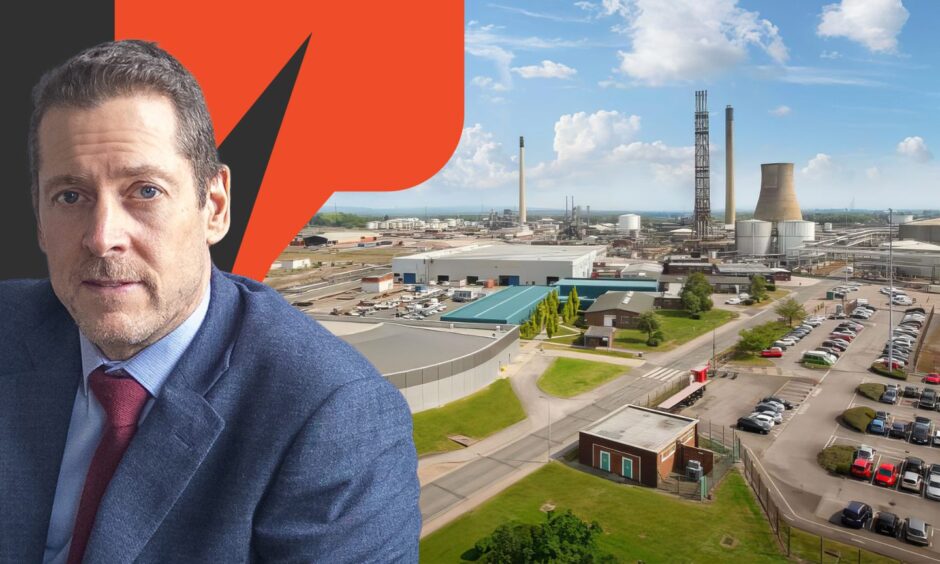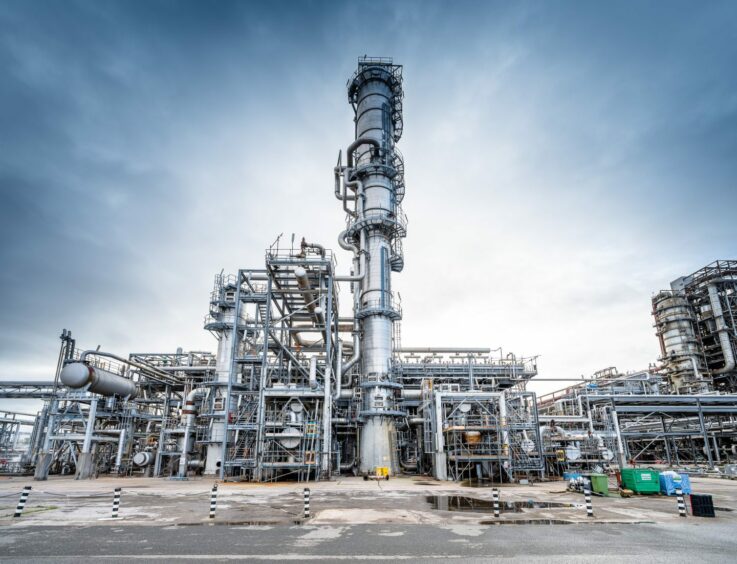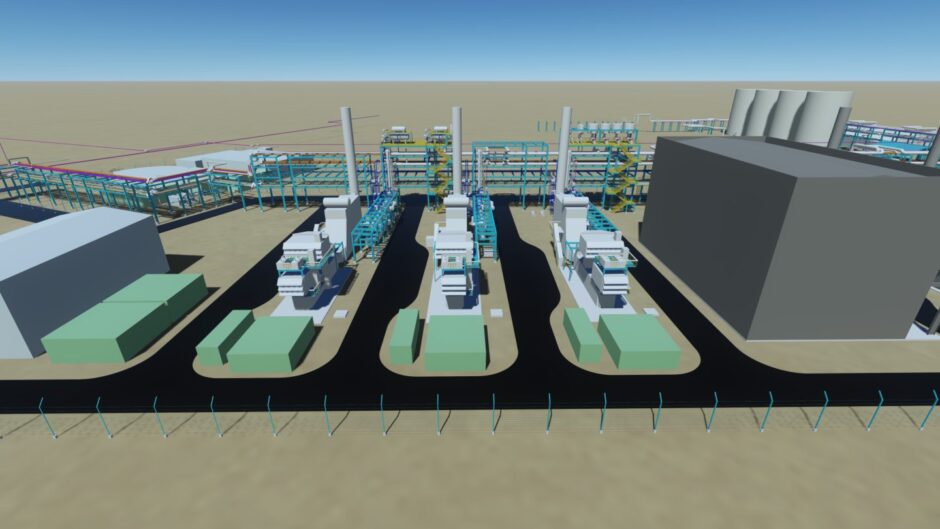
In January 2024, Essar Oil UK became EET Fuels as part of its plan to transform the Stanlow Refinery at Ellesmere Port to become one of the largest energy transition hubs in Europe.
Energy Voice spoke to EET Fuels’ Marcos Matijasevich, who is leading the project to deliver the world’s first low-carbon refinery. This is reliant on EET’s unique position in the UK, its connection to the grid and its role at the heart of the HyNet industrial decarbonisation project.
Energy Voice: Could you paint a picture of how you’re leading at EET, what you’ll bring to this project and how it sits within the overall UK energy picture? What is the mission of the project?
Marcos: The mission of the project is to essentially transform this site, the Stanlow refinery, into one of the largest energy transition hubs in Europe. That is very aligned with the UK government’s decarbonisation ambitions, as seen in the ten-point plan and what we call the energy security strategy.
Currently, the number one objective of the government is to capture 20 to 30 million tonnes of carbon dioxide per annum, then sequester it into clusters in the UK. They intend to do that before the turn of the decade, and this will include three of our projects in EET (Essar Energy Transition).
These include EET Fuels’ industrial carbon capture project and the first two hydrogen production plants from EET Hydrogen. We are going to be capturing 3.3 million tonnes per annum, contributing materially to that 20 to 30 million target. In fact, we’re going to achieve that by 2030.
Another key objective in the hydrogen strategy is to achieve 10 gigawatts (GW) of low carbon hydrogen production with up to 4 GW of this 10 being CCS-enabled, or what people call blue hydrogen. Through EET Hydrogen, the first two of four planned plants will provide 1.35 of that 4 GW – quite a material contribution before the turn of the decade, which is when these targets are intended to be achieved.
Then, through plants three and four, part of our longer-term ambition, we aim to generate 4.1 GW – so again another considerable amount of material.
Another key objective from the UK government, more recent than the original objectives announced in the 10-point plan, is achieving a net zero power grid all across the UK. We are contributing to that too through EET Hydrogen Power, which is going to become the first low carbon power producer from hydrogen in the world. We’re going to be exporting this low carbon power into the grid directly for which we have a connection right here in Stanlow. In fact, I can actually see it from my office!
Finally, another important one is the contribution of decarbonising the hard-to-abate transport sector, namely the aviation and maritime sectors.
The way we do that is by effectively supplying the low carbon fuels of the future; SAF, which is essential to achieve jet zero, as well as green ammonia and E-methanol – the key fuels replacing maritime fuel oil, which is the dirtiest of the fuels produced by any refinery.
Through these four governmental objectives, we are very focused on specific elements of the UK government’s ten-point plan and energy security strategy plans – so effectively we are decarbonising not just industry but also transport.
EET Fuels’ refinery, that we have today, is the seed for the creation of our additional businesses. While EET Hydrogen and EET Hydrogen Power are separate entities, they are adjacently co-located at Stanlow and work with each other.
For example, EET Hydrogen produces hydrogen using captured refinery off-gas from EET Fuels. EET Hydrogen Power then produces power using the feedstock made by EET Hydrogen, then sells this power to the refinery and to third parties through the grid – so that’s how these things link together.
How would you articulate the unique value proposition that the Stanlow project offers. What makes it unique?
What makes this project unique lies with one thing only – and that’s the location. Stanlow is not just located where it is by chance. It sits at the core of HyNet, and we were involved in HyNet from the very early stages, so we designed this whole system around Stanlow.
This results with the Stanlow refinery, or EET Fuels, which created the EET Hydrogen and EET Hydrogen Power businesses, sitting in such a privileged location within HyNet such that we are the only refinery in the UK that has a direct access to a consented pipeline of CO2.
A pipeline development consent order was given to ENI, who manage the development of this CO2 transport storage infrastructure. It gives us the access to decarbonise – If you don’t have that, then any industrial site of this size simply cannot decarbonise. It’s a must-have.
More importantly however, that single uniqueness on location enables us to make some more unique offerings.
The first is we will be the first decarbonised refinery in the world by 2030.
That means the fuels and chemicals products we will be selling by 2030 will have the lowest carbon intensity compared to any other refinery. That’s unique – the first one in the world.
When you look into EET Hydrogen’s plants – the second point is that the first plant will be the most advanced blue hydrogen project in the world, particularly in the UK. This is because we’re competing with another one that wants the right to negotiate the CfD with government to support progression after FID (final investment decision). However, we have the project that is most advanced and therefore likely to become the first one of all the UK low carbon hydrogen projects to produce hydrogen at scale.
Another unique element is that, through both EET Hydrogen’s first and second hydrogen plants, it will produce 1.35 GW. There’s no other project in the UK with that scale of ambition.
And then the final element is the provision of low carbon power. When we introduce the low carbon power from EET Hydrogen Power this will become the first low carbon power producer in the world using hydrogen. We will be installing the first hydrogen turbines in the world, so these are unique offerings to provide the low carbon fuels of the future – the low carbon hydrogen, low carbon power and the low carbon fuels – precisely because we have that uniqueness in the positioning as a refiner, we have the molecules to make those energy vectors.
In terms of CCS, what do you consider to be the potential stumbling blocks and solutions? There’s been widespread scepticism around how viable CCS or CCUS can be. Industry has pointed out that its the ‘utilisation’ bit that’s the key. A lot of people skip that. What do you consider to be the stumbling blocks and challenges there?
To answer the “U” first, we don’t care too much about the U at the moment. At this point in time, you only get subsidised for capturing CO2 and do CCS – not if you do “CCU”. You have to CCS.
That’s the only reason why we are interested in CCS – the current business model says you don’t get a penny if you utilise it.
In terms of what the challenges are, I’m not going to be able to comment much on the technicalities of the offshore facilities. A key consideration, historically, has been the pace at which the cluster sequencing process occurred.
That said, what we currently see here in the UK is excellent, and I cannot praise enough how good the policy environment is for private sector industrial emitters like us to invest in decarbonisation. It is great – there’s nothing to be complained about at all from this angle actually. The thing we see with the current government is the pace at which these sequencing processes are happening.
For example, if I look at the first batch of CCS enabling projects that we applied for in January 2022 – The winners were announced in March 2023, 14 months later.
In March 2023, we started negotiations on a project that we eventually became a winner in, EET Hydrogen’s HPP1, and now we are expecting to get a signed contract in September 2024 – 18 months after. So that has taken three years.
In short, we have a great UK policy environment to favour us and making us willing to invest, but we welcome the pace demonstrated by government to achieve their ambitions. We also welcome a high level of pragmatism to effectively overcome obstacles and make sure we keep the process flowing to the original schedules.
Maybe we need the new democratically elected government to take a dictatorial approach on these kind of decisions and just get on with it… So have you already covered the regulatory challenges and required incentives to enable projects like yours to progress and get more investment?
These are huge government objectives and that means that you need a good number of projects to reach those objectives, 20 to 30 million tonnes per annum, 10 GW of hydrogen etc. That can only be processed by a certain capacity in your regulatory bodies. This includes the Environmental Agency, which needs to approve every one of our environmental permit variations, the Health and Safety Executive (HSE) who needs to approve our common variation and safety reports. We also have the DESNZ (Department for Energy Security and Net Zero) who need to look at our applications, review the due diligence, negotiate contracts for differences etc.
There’s a huge volume of work that goes into regulatory bodies in the government. They are highly skilled and need the resource to keep up with the pace of the ambition and equally, the Treasury needs to be equipped with the funds that this ambition requires. As July’s King’s Speech acknowledged, the private sector investing here, and there is a level of subsidy required and of course these are tough decisions that governments have to make, and the new government have tough decisions to make.
The final element is the CBAM, the Carbon Border Adjustment Mechanism, which I’m passionate about. In a nutshell, it is important to include refineries in this consideration to make sure that our industry remains competitive while we transition.
This is a great opportunity for the UK to show leadership on how you decarbonise industries; inspiring and incentivising decarbonisation through different means for similar industries around the world and say that they should do exactly the same thing.
What would be your message to the new Labour government…?
We can only ask that the pace of the cluster sequencing process remains consistent.
The UK has an undeniable advantage of leading decarbonisation globally through permanently sequestering CO2. I am in principle encouraged by the plans for Great British Energy outlined at the King’s Speech as it shows a clear commitment to the transition. Consistency in speed and visibility of milestones are critical for private sector investment to decarbonise the power system.

 © Supplied by Essar
© Supplied by Essar © Supplied by Essar Energy Transit
© Supplied by Essar Energy Transit